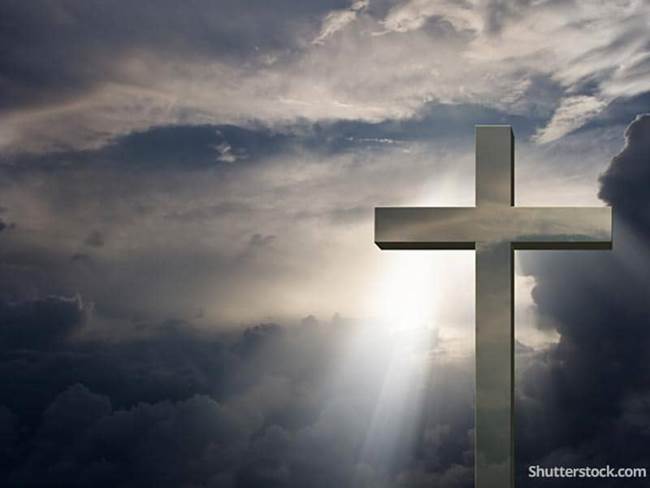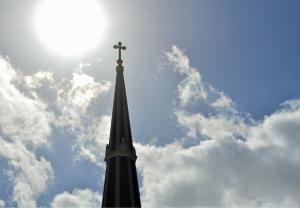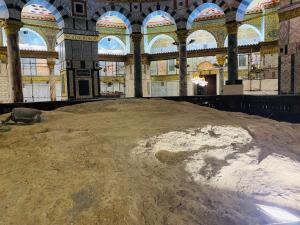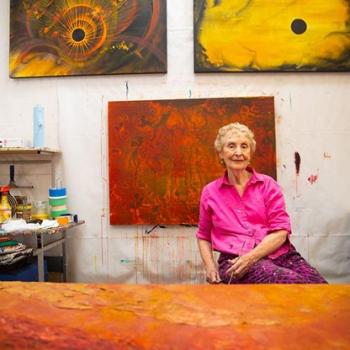By Shalom Goldman, Duke University
Within Israeli Jewish society, a frequently-heard witticism is that “the synagogue I don’t go to must be Orthodox.” This is a way of signaling that the speaker does not have much use for clergymen and rituals, but if he or she did need them, they would seek out an Orthodox cleric and house of worship.
This well-known Israeli adage conveys a numbers of uncomfortable truths. First, the great majority of Israeli Jews don’t attend a synagogue regularly. In contrast to the U.S., where 40% of the population attends a weekly religious service, only 20% of Israeli Jews attend a synagogue weekly. (And some 20% have told pollsters that they would never enter a synagogue, as they are professed non-believers.) Second, when Israeli Jews do go to the synagogue (for a holiday, a wedding , or a funeral), they go to an Orthodox synagogue, for that is the only type of congregation recognized by the Israeli government and the Israeli public.
When Israelis and foreign tourists visit Jerusalem’s Western Wall, an area often dubbed “Judaism’s holiest site,” the form of Judaism they encounter is strictly Orthodox. Men are required to cover their heads with a skullcap, Rabbis under the supervision of the state Rabbinate supervise the proceedings, and men and women are strictly separated by barriers. The continual spectacle of worship and tourism at the Wall, operating non–stop since the late summer of 1967, combines potent political and religious imagery, and it reinforces the idea that Judaism has but one “authentic” form. All other forms–those more liberal in their understandings of the Jewish tradition–are therefore “inauthentic.” And, by common inference, the clergy of those liberal traditions, who have no authority at the Wall, are obviously of no account in the Israeli order of things.
A group that is trying to challenge these biases–including the bias against women’s full participation in Jewish ritual life–is “Women of the Wall” (WOW). Founded in 1988 by American and Canadian immigrants to Israel, the group has worked against considerable opposition to enable women to pray at the Wall in the same ways that men do–wearing a tallit (prayer shawl) and teffilin (phylacteries), forming a “minyan,” or prayer quorum, and reading from the Torah scroll.
According to Talmudic law women are free of the obligation to wear tallit or teffilin, but they are not expressly prohibited from doing so. But because it was so rare in Jewish history for women to take on these ritual behaviors, any attempt to have women do so now is viewed by mainstream Orthodoxy as dangerous innovation. As the great British Rabbinic scholar Rabbi Louis Jacobs noted decades ago, “Orthodox Rabbis generally disapprove of women wearing the tallit, chiefly because it is untraditional for women to do so.”
Because the call for women’s rights to worship in the same way as men do has become a clarion call among liberal Jews throughout the world, and because liberal forms of Judaism are seen as a mortal threat to Orthodox hegemony, opposition to Women at the Wall actions is often met by violence from male Orthodox protestors. And it is the threat of that violence that led to the arrest of Anat Hoffman, one of WOW’s leaders at the Western Wall in November.
The publication of dramatic photos showing Hofmann being arrested by policemen at the Wall, and her incarceration in a Jerusalem jail, generated international protests by liberal Jewish groups. In the U.S., the Conservative Jewish movement organized a Flash Mob protest that gathered over three thousand participants, many of them youngsters from Conservative synagogues.
Though long-known and often vilified by Orthodox Jews, WOW has recently garnered international attention, and on a recent Sunday was featured in an article in the New York Times. Written by the Times’ Jerusalem correspondent, Jodi Rudoren, the article is sympathetic to WOW’s aims and critical of Israeli policy. And therefore the article has generated a torrent of criticism from religious and political conservatives, who, like many American Rabbis, imagine themselves as “defenders of Israel.” As a colleague of mine remarked in a debate about criticism of Israeli policy toward the Palestinians, “for these ‘defenders of Israel’ it is always 1948, when Israel was established. What has transpired since then does not matter to them.”
But, of course, it does matter. Just as Israeli policies have influenced Palestinian actions, the pro-Orthodox actions of the Israeli government over the past six decades have it made it more difficult for liberal forms of Judaism to flourish. What, then, are the factors that make WOW’s opponents so powerful? How has Orthodox power affected the other Jewish denominations? And why have WOW’s claims touched such a nerve among American observers, particularly among American Jews, who though generally liberal are turning more and more toward the political right concerning Israel?
By now, with almost 65 years of Israel’s existence, WOW and other activists who seek to challenge Orthodox hegemony over Jewish religious life have a powerful set of forces arrayed against them. Orthodox power has experienced remarkable growth in these six decades: In Israel, all Jewish clergy must be ordained in Orthodox seminaries. Upon their ordination and their employment (as congregational Rabbis, seminary teachers, kashrut supervisors or military Rabbis) the government pays their salaries out of its tax revenues. And perhaps most aggravating to the majority of Israeli citizens, Orthodox young women and all male teachers and students in Orthodox seminaries are exempt from the universal conscription that is the norm for all Israeli youth. And then there is a related gender issue, key to the controversy over the demands of the Women of the Wall. As Orthodox seminaries ordain only men, Orthodox women are limited in the religious authority they can exercise within their communities. If male Rabbis have decided that women cannot pray wearing prayer shawls, women have no way to challenge their ruling.
Conservative and Reform Judaism, those liberal denominations with which the majority of affiliated American Jews identify, have little standing or influence in the Jewish State. Rabbis ordained by their seminaries (the Jewish Theological Seminary and the Hebrew Union College, respectively), which ordain women as well as men, have no authority to officiate as clergy within Israel. These liberal Rabbis are often derided by Israelis as “fake Rabbis.” And that is because, for most Israelis, a “real Rabbi” is a man with a beard who wears a tallit, or prayer shawl, during prayer. A female Rabbi is an anomaly in Israeli culture, and among Orthodox Jews everywhere is a figure of ridicule.
One of the paradoxes of modern Jewish life is that liberal Jewish clergy cannot gain respect or authority in Israel, a state whose very existence and centrality to Jewish life is lauded and valorized in their seminary educations. There seems to be considerable cognitive dissonance at work here. Every Conservative and Reform rabbinical student has to spend at least a year at their seminary’s campus in Jerusalem. And once they are serving in American synagogues, these liberal Rabbis, no less that their American Orthodox counterparts, spend a good deal of their time and energy assuring their congregants of their “love of Israel.” I know of many an American Rabbi who sees him or herself as a “defender,” “protector” and “lover” of Israel, but this is a strange love, one that not only goes unrequited in Israel itself, but is often met with considerable hostility by Israeli officials. Despite this hostility the Conservative and Reform movements have established a presence in Israel, and these movements have been attracting Israeli followers, though not at an exponential rate of growth.
So we can see why these recently-minted Israeli religious liberals would support WOW and protest their treatment by the Israeli authorities. But one might wonder why there has been such a hue and cry among American Jews about this situation. One answer is that officiating at a synagogue service is the least of the powers that Israeli law grants the clergymen of its contentious and contending religious communities. The real power of the clergy in Israel—a power granted to Muslim and Christian clergy as well as to Jewish clergy-–is that they have control over the “personal status” of each and every member of their communities.
A curious and outmoded legacy of the Ottoman and British empires, and a legacy now enshrined in Israeli law, the laws of personal status state that all cases of religious conversion, marriage, divorce, and burial are under the jurisdiction of religious authorities, not of civil authorities. Hence, this is an issue that touches on the lives of all of Israel’s citizens.
Because of this situation, all marriages, divorces and burials have to be conducted by clergy, and there are no secular forms of these ceremonies to meet the needs of “non-believers”—or more accurately, “non—belongers.” Or, in the Jewish case, the needs of those Israelis who want to choose clerics from a non-Orthodox denomination. Thus, for example, an ordained Reform Rabbi would not be able to officiate at a wedding in Israel and have the marriage registered with the government authorities.
Israeli Muslims and Christians are bound by similar dictates; they can be married, divorced or buried by their own clergy only. All marriage, then, is “by benefit of clergy,” though one wonders if that Anglo-American phrase is appropriate here. And in what strikes American observers as a very undemocratic situation, there is no provision for those who would choose non-sectarian forms of marriage, divorce, or burial. One consequence of this arrangement is that individuals of different religious communities cannot marry each other. If a Jew, Christian, or Muslim wishes to marry someone from another community they have to go overseas to have the marriage recognized by foreign civil authorities; once that is done the Israeli authorities will reluctantly accept it.
Thus in Israel, all citizens are identified through religious affiliation; it is a society in which there is no religiously unaffiliated status. To borrow a term from the contemporary sociology of American religion, there are no “nones” in Israel–no individuals who check the “none” box in surveys–thus telling pollsters that they belong to no organized religion. That option is simply not available in what the Israeli government likes to boast is “the only democracy in the Middle East.” One might say that for Israeli citizens there is a degree of “freedom of religion,” but there is no “freedom from religion.” Even death does not free you from the power of the clergy. You cannot be buried without them.
How might this Orthodox power adversely affect American Jews, who can marry whom they like, be divorced by the state, and be buried in the place and manner that they choose? It can affect the lives of American Jews because the Israeli Rabbinate has attempted to appropriate authority over conversion to Judaism and provide one and only one answer to the question of the question, “Who is a Jew?”
It is in this context of these struggles over religious authority and gender equality that the current controversy surrounding the treatment of “Women of the Wall” can be understood. For Israeli Orthodox religious authority threatens the fabric of American Jewish life, which is focused on ethnic identity, not on religious behaviors. It also threatens the development of liberal and gender-inclusive forms of religious behavior–including those promoted by the Women of the Wall.
Shalom Goldman, Professor of Religion, Duke University












